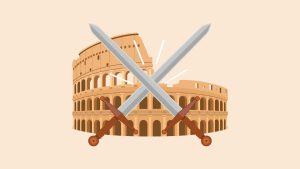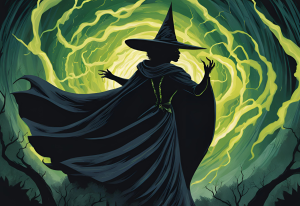Artizan is a five-piece melodic heavy metal band from Jacksonville that got a fresh start in 2009 and has remained stable for a band of its genre amidst the Florida music scene. The band’s early 2011 release, debut album Curse of the Artizan, boasts seven songs that demonstrate its best aspects: musical solidarity, technical capacity, lyrics seeped in emotion, and a musical premise that keeps me interested in what the band is about.
Artizan’s influences are obvious to the avid metal listener and the best comparisons with existing metal acts include Fates Warning, Iron Maiden and Queensryche, all considered classics during the 1980s. Vocalist Tom Braden’s singing shows that he has a clear, resolute voice in both the studio and on stage. Braden does not overexert himself and strikes the listener as a patient vocalist who has no pressing need to show off. Musically, the guitars, bass and drumming also evoke the galloping techniques reminiscent of the older Iron Maiden classics and progressive passages including start-stop riffing, clean and acoustic passages and the occasional technical rhythm harkening back to ‘80sera Fates Warning.
Ty Tammeus is a powerhouse of a drummer and the creative force behind Artizan in addition to being a very outgoing and friendly individual, as demonstrated during the band’s performance at the Haven Lounge in Winter Park on Aug. 20. The subject matter of Artizan’s music is embodied in the image of a dark stylized sculptor conjuring a beast out of stone to seek vengeance against those who have tormented him. This is depicted on Curse of the Artizan’s cover art, which was created by fantasy artist Marc Sasso, who also did artwork for internationally acclaimed bands such as Dio and Halford.
In addition to the seven songs, the album also contains the track “Torment,” an interlude to the final song, “Curse of the Artizan,” which serves to show what the band is about. The artwork describes the song with impressive clarity, and an update on the band’s official website (artizanmetal. com) characterizes the Artizan as a tormented child who realizes, over time, that “he was born with a gift to sculpt and paint characters which come to like and seek retribution on those that were cruel to him.” This premise keeps the listener invested in what will become of the Artizan and makes him or her anticipate future music from the band.
The album is for fans of classic ‘80s metal and the art adds to the music; those who also have been tormented in childhood for being unique can perhaps relate to the subject matter. The best songs on the album are “Trade the World;” “Rise,” which features one of the album’s catchier choruses; “Game Within a Game,” consisting of various progressive riffs; and the epic progressive metal piece, “Curse of the Artizan.” It is a recommended highlight of Florida’s often-imperfect metal scene. For listeners unacquainted with metal, Curse of the Artizan would appeal to listeners of ‘80s music due to its similar melodic flavor.







Be First to Comment